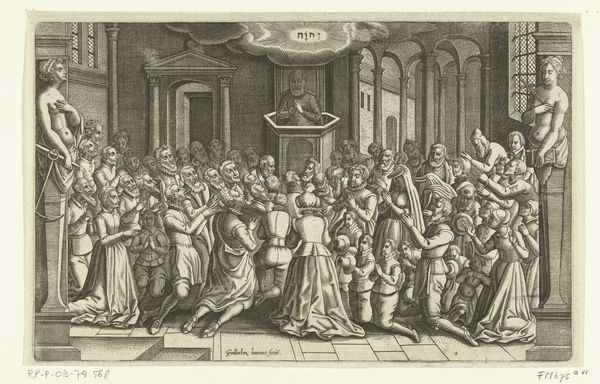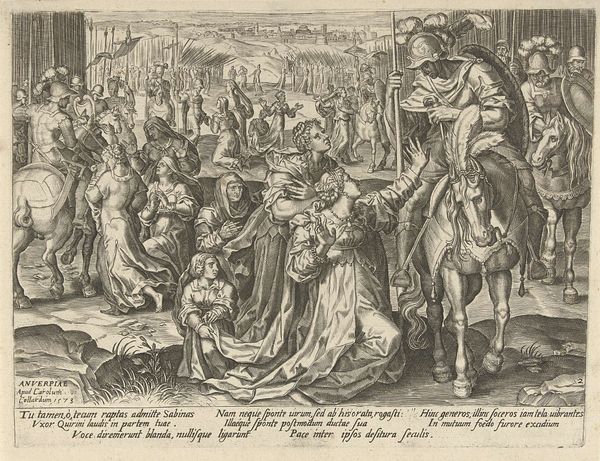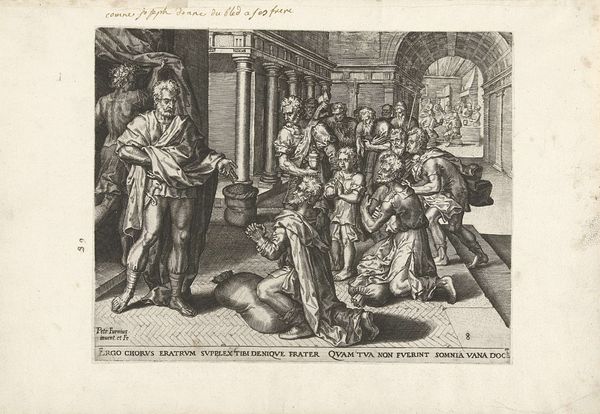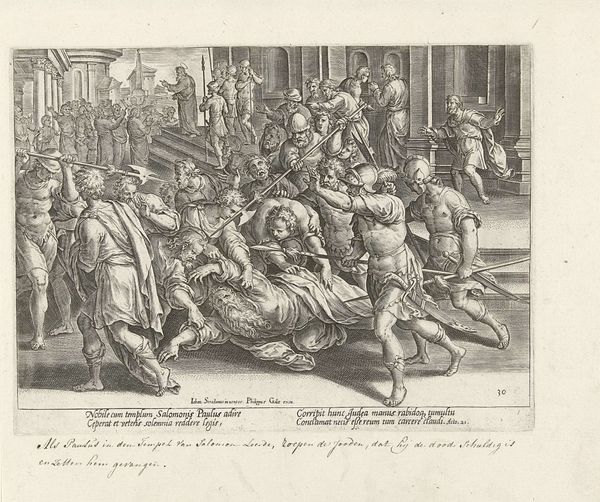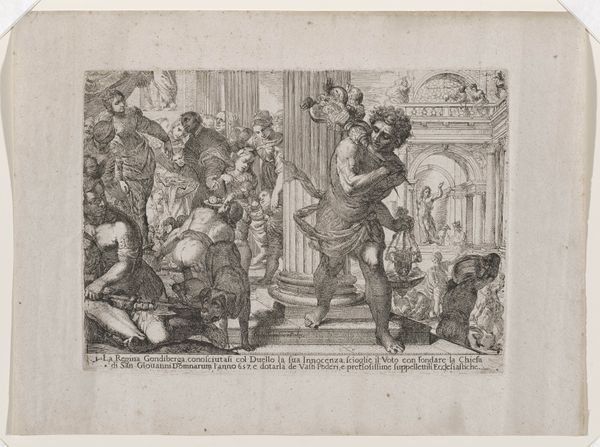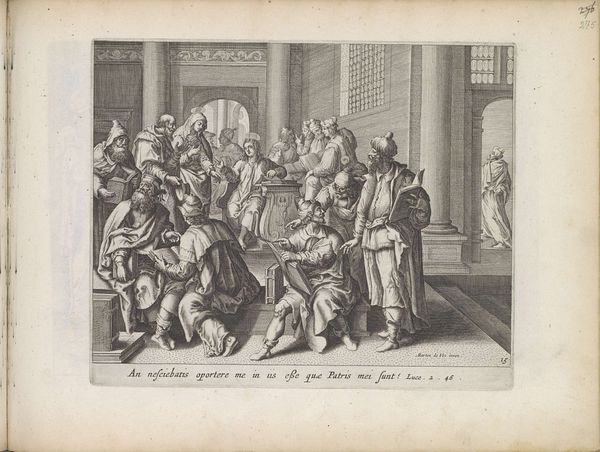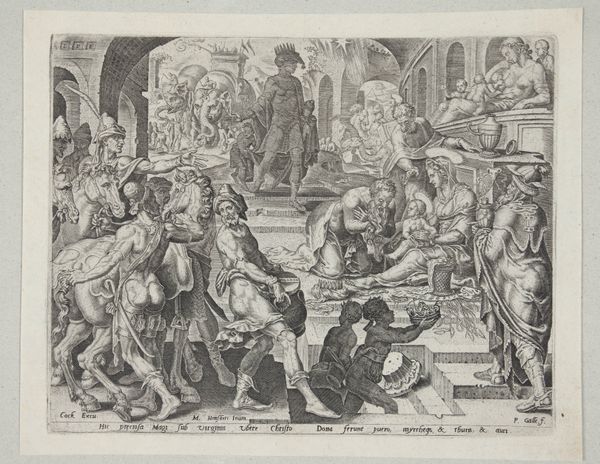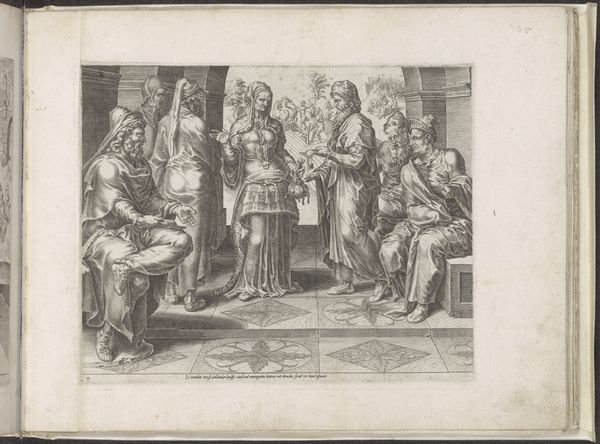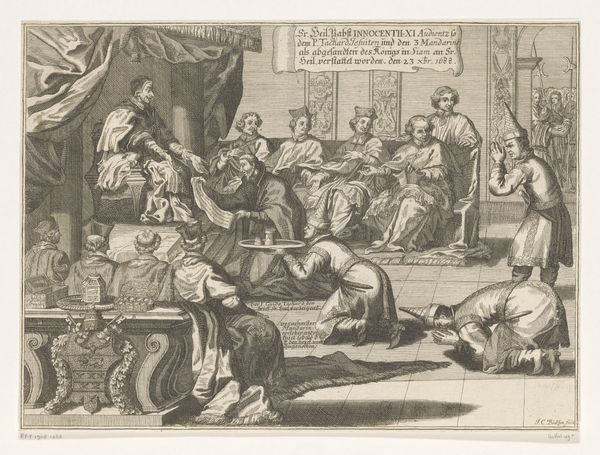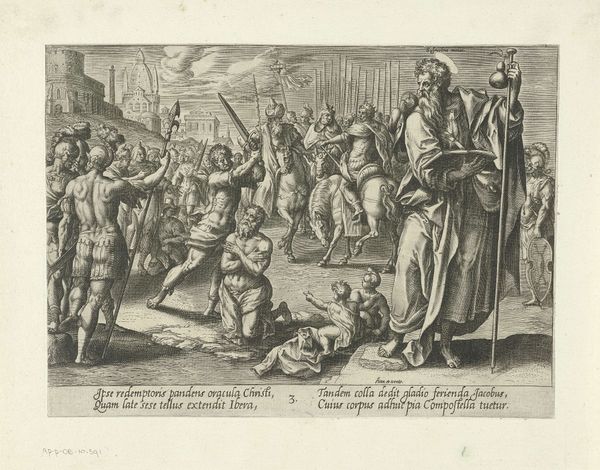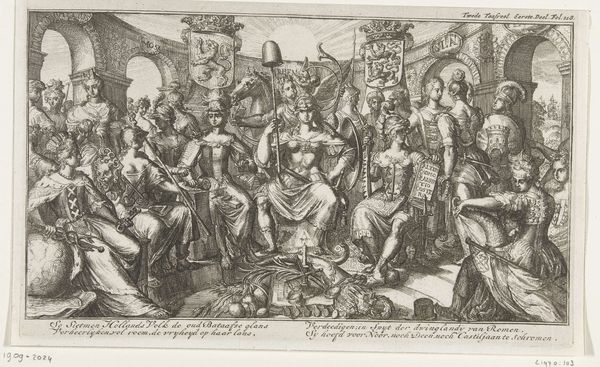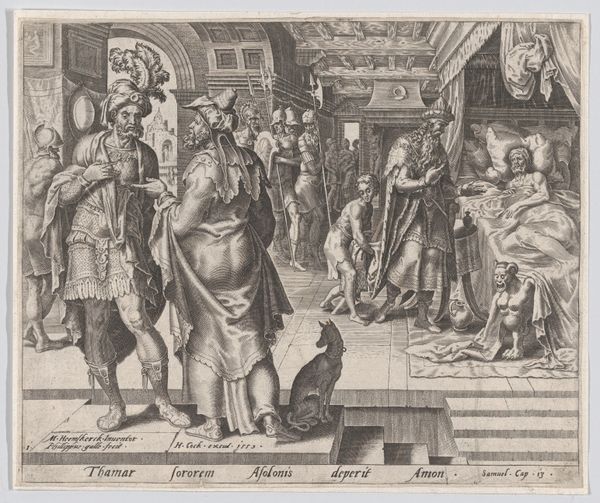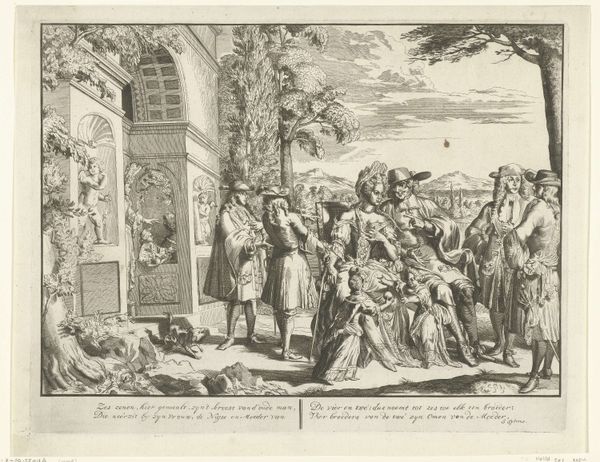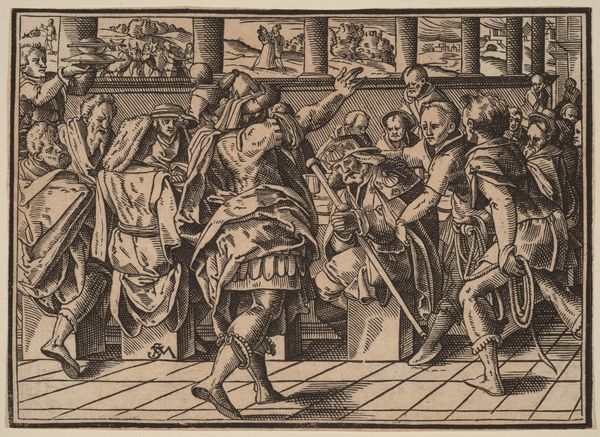
print, engraving
#
aged paper
#
toned paper
#
narrative-art
#
baroque
# print
#
old engraving style
#
figuration
#
genre-painting
#
history-painting
#
engraving
Dimensions: height 405 mm, width 500 mm
Copyright: Rijks Museum: Open Domain
Editor: This engraving, "The Wedding at Cana," dating from 1640 to 1670, attributed to Clement de Jonghe, really captures a sense of bustling activity and social hierarchy. What broader narratives might be at play in this scene, especially considering its historical context? Curator: That's a great starting point. The scene depicts a biblical story, but consider the power dynamics embedded within. How does the artist portray the servers, for instance, compared to the wedding guests? Think about class, gender, and even the role of religious institutions at that time. Editor: I see what you mean. The servers are depicted with so much movement and less refined features than those seated at the table. How might this representation uphold or challenge existing social structures? Curator: Exactly! It reinforces social stratification. The ruling class is shown as static figures compared to the frantic servers, but it could be argued that this biblical scene promotes the radical idea of access to all through faith and thus potentially challenge established hierarchies. Do you think this interpretation humanizes Christ? Editor: It certainly reframes the narrative! This discussion has broadened my view, as I am now attentive to the nuanced dynamics represented. Thank you. Curator: The pleasure is mine! Let’s continue to critically investigate these intersections of power and representation in other artworks we come across.
Comments
No comments
Be the first to comment and join the conversation on the ultimate creative platform.
